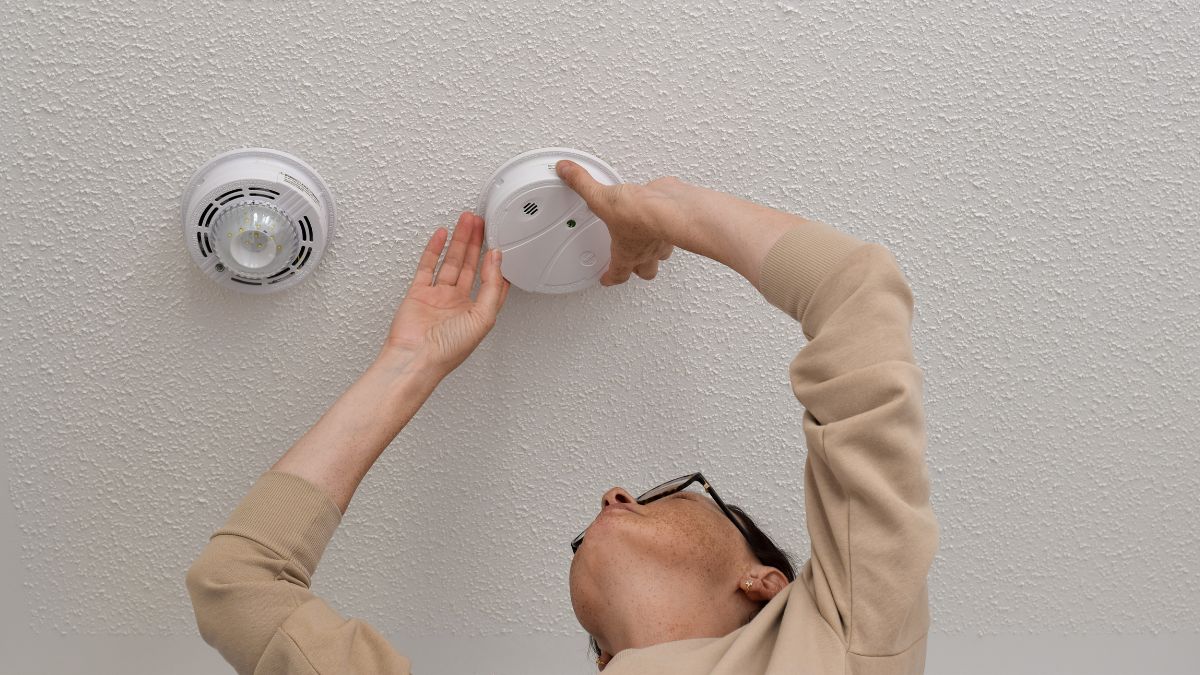Owning a home is expensive. In addition to mortgage payments, being responsible for maintenance often becomes costly. While there’s not a whole lot that can be done to significantly bring down prices of basic upkeep as labor and material costs continue to climb, being proactive when it comes to certain home projects can save you money in the long run.
Home projects that reduce total spending
From preventing severe damage and emergency renovations to slashing utility bills, here are the most important tasks to stay on top of for optimal savings.
Fire safety
Angie Hicks, co-founder of Angi, suggests regularly testing and replacing the batteries in your smoke and carbon monoxide detectors, and making sure you have working fire extinguishers on-hand.
“These are low-cost, DIY-friendly tasks—batteries typically cost under $10, and a new fire extinguisher runs $30–$60,” explains Hicks. “But the potential savings? Massive. Early detection of a fire can prevent tens of thousands of dollars in property damage—and even save lives. It’s one of the highest-impact, lowest-cost forms of maintenance you can do.”
Leak risk factors
You might not immediately worry about a small drip under your sink or around your shower, but If ignored, it could lead to mold, structural damage and other costly repairs, cautions Hicks.
“Professional leak repairs cost about $250–$850, but if left unchecked, the resulting water damage can quickly escalate into $3,000–$10,000+ in repairs, especially if mold remediation or flooring replacement is needed,” she says. “Regular inspections and quick fixes can make a huge difference.”
Heating and cooling
Regular servicing of your HVAC systems keeps necessities like heating, ventilation and air conditioning running efficiently. It also helps you avoid costly breakdowns during peak seasons, explains Hicks.
“A typical tune-up runs $175–$350, and it can prevent repair costs that range from $130 to $2,000,” she offers. “Full replacement, especially with ductwork, can soar to $12,500 or more. Annual maintenance improves energy efficiency too, saving you money on utility bills while keeping your home comfortable year-round.”
Plumbing
Any water heater with a tank should be flushed at least yearly, and potentially more often if you tend to have higher-than-average buildup in your home water, says Ethan Lawrence, technician with Service Force Plumbing.
“Depending on where you live, it will probably cost $100-$200, but it may also be included in a plumbing maintenance plan, and it’s a pretty straightforward task that most homeowners can do themselves,” he explains.
Allowing excessive and long-term buildup in your hot water tank can shorten its lifespan and make it more costly to function properly. Water heater replacement costs range from $882 to $1,807, with the average cost being $1,327.
Roofing and gutters
Especially before spring and summer bring heavy rains, you’ll want to make sure your gutters are clear and your roof is in good shape, says Hicks. Gutter cleaning costs around $119–$234, while replacing a few damaged shingles might run a few hundred dollars.
However, delaying this maintenance can lead to water intrusion, foundation damage or even interior flooding, which can run around $3,814 on average, with the potential for mold or drywall repair driving that number much higher, she notes.
Appliances
If you don’t make a habit out of cleaning your kitchen and laundry appliances, you might want to start. Regularly cleaning your washing machine—inside the drum, filter and around the gasket—can help you avoid costly repairs or early replacement, offers Hicks.
“A deep clean can be a DIY task, or you can hire help for $100–$150,” she says. “In contrast, repairing a washing machine costs $150–$500, and replacement averages $700–$1,000 or more. Plus, well-maintained appliances use less energy, which lowers your utility bills month after month.”
Landscaping
One of the best ways to safeguard your house from environmental dangers is tree trimming, says Mike Powell, owner of Red Flag Home Inspection. Normal trimming costs vary, but typically range from $200 to $800 per tree, depending on the tree’s size and location, he notes.
“Regular trimming prevents potential damage during storms, such as broken windows or damaged roofs, which could result in repair costs ranging from a few hundred to several thousand dollars,” adds Powell. “Tree limbs rubbing against the house can chafe roofing materials, or abrade siding elements. Additionally, well-maintained trees contribute to the overall aesthetic of the property, potentially increasing its market value.”






